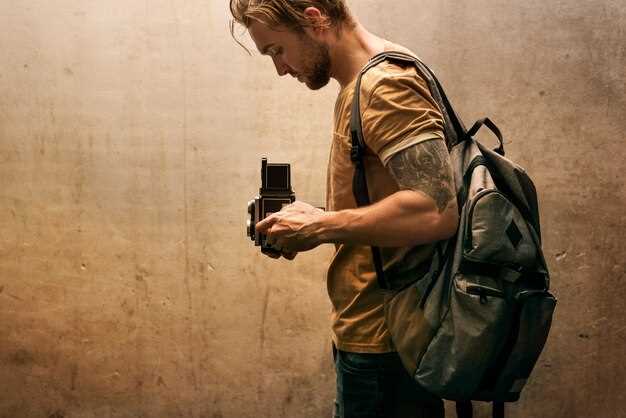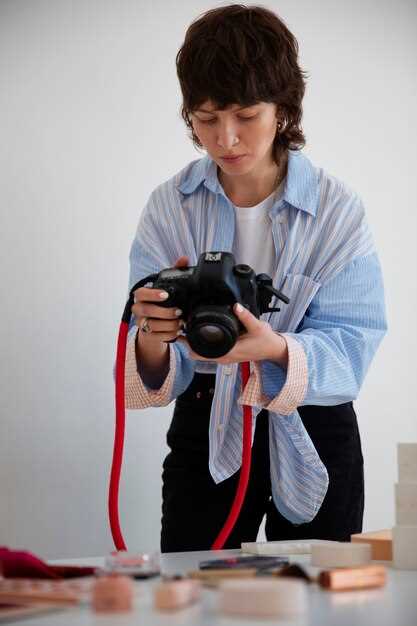Capture movement with precision by mastering shutter speed settings. Understand that faster shutter speeds, such as 1/500s or higher, are essential for freezing motion in action photography. This technique allows you to capture every detail of your subject, whether it’s an athlete in mid-air or a speeding car. Practice adjusting your camera to these settings to see the difference in the sharpness of your images.
Effective focus is your ally in action photography. Switch to continuous autofocus mode to keep your moving subject in focus at all times. This setting ensures your camera adjusts promptly, so each frame remains clear and detailed. With practice, you’ll find it easier to anticipate your subject’s movements and achieve consistently sharp images.
Do not overlook the importance of composition in action shots. Aim to include a clear background that contrasts with your subject. This technique highlights the action and provides context, making your images more compelling. Experiment with various angles and watch how the dynamics of the scene change with your viewpoint. A well-composed shot, combined with technical precision, transforms ordinary action into extraordinary photographs.
Photography Techniques 101: Mastering Action Shots and Composition

Focus on predictive movement to capture action shots effectively. Anticipate where the action is headed and position yourself accordingly. Adjust shutter speed based on the type of motion. Fast movements often require shutter speeds of 1/1000th of a second or faster to freeze action.
Try incorporating panning techniques to convey motion. Follow the subject with your camera, using slower shutter speeds like 1/30th of a second to create a dynamic blur of the background while keeping the subject sharp. Ensure your stance is stable, and move the camera smoothly to maintain focus on the moving subject.
Evaluate your composition by including context in the frame. Look for angles that highlight the environment around the subject, adding depth to your shots. Utilize the rule of thirds to keep compositions engaging, positioning your subject off-center to create balance and interest.
Experiment with different lenses to vary perspectives. Telephoto lenses allow you to get close to distant action, compressing the background for dramatic effects. Wide-angle lenses bring depth and breadth to scenes, useful for capturing multiple elements in one frame.
Consider lighting conditions, as they significantly impact motion photography. Use natural light wisely to enhance the mood, and be mindful of shadows and highlights. When shooting indoors or in low light, adjust ISO settings to maintain clarity without excessive noise, or use external flashes judiciously to freeze action.
Always be ready to adapt to changing scenarios. Keep backup batteries and memory cards handy to avoid missing critical moments. Regularly check your equipment and settings to ensure you are prepared for sudden shifts in the action. Keep pushing your creative boundaries by trying out new techniques and perspectives with each shot.
Action Photography: Capturing Motion with Precision

Choose a fast shutter speed. Set your camera to a shutter speed of at least 1/1000 of a second to freeze motion and capture sharp images. This is crucial when photographing fast-moving subjects like athletes or wildlife.
Utilize continuous shooting mode. Activate the burst mode on your camera to capture a sequence of shots in rapid succession. This increases your chances of getting the perfect action shot without missing critical movements.
Adjust your focus settings. Switch to autofocus with continuous tracking to maintain sharp focus on moving subjects. This feature is particularly helpful when subjects move unpredictably, allowing your camera to adjust focus in real-time.
Experiment with panning to convey motion. Move your camera in sync with a moving subject while using a slower shutter speed, like 1/60 of a second. This technique creates a sense of speed with blurred backgrounds while keeping the subject sharp.
Take advantage of natural light. Shooting during the golden hour–shortly after sunrise or before sunset–provides softer lighting conditions, reducing harsh shadows and enhancing colors. When combined with action photography, this lighting can create visually stunning effects.
Practice timing and anticipation. Anticipate the action by observing patterns in motion, then press the shutter at the decisive moment. With practice, you’ll improve your ability to predict and capture peak action.
Keep your equipment ready. Use a tripod or monopod for stability, especially if you’re using heavy telephoto lenses. Ensure your camera has ample battery life and storage, so you’re prepared for extended shooting sessions.
Continuously review and refine your technique. Analyze your shots, identify areas for improvement, and experiment with different settings or angles. Over time, your skills in capturing precise action shots will evolve significantly.
Choosing the Right Shutter Speed to Freeze or Blur Motion
For crisp action shots, set your shutter speed to at least 1/500 of a second. This helps capture fast-moving subjects like athletes or wildlife in sharp detail. When photographing extremely fast subjects, such as race cars, opt for even faster settings–up to 1/2000 second or more might be necessary to ensure clarity without motion blur.
If you aim to create a sense of motion, use slower shutter speeds. A shutter speed around 1/30 of a second can effectively blur moving objects while keeping the rest of the image sharp with tripod stability. This technique works beautifully for capturing the motion of waterfalls or bustling city streets at night, where flowing light trails add dynamic movement.
Avoid middle-of-the-road settings, such as 1/125 of a second, which neither crisply freezes motion nor sufficiently blurs it. Practicing these approaches in diverse lighting conditions will help you adapt and find the perfect balance to achieve your desired artistic effect.
Exploring different shutter speeds and their impact on motion capture.
Adjust your shutter speed to better capture motion. For a clear freeze of fast-moving subjects, choose a fast shutter speed, like 1/1000 of a second or higher. This setting is ideal for activities such as sports, wildlife photography, or any scene where capturing details of rapid motion is key. The fast shutter speed negates motion blur and preserves the sharpness of each frame.
If you prefer to convey a sense of movement, consider slower shutter speeds such as 1/30 or 1/15 of a second. These speeds allow motion blur to effectively illustrate speed and direction. Use slower speeds creatively to create dynamic images where moving elements are intentionally blurred, while stationary parts remain crisply focused. This effect can be especially striking in scenes featuring water, traffic, or dancers.
For night photography or low-light conditions, even longer shutter speeds come into play. Using a setting like 1/4 of a second or longer requires a tripod to prevent camera shake and ensure sharpness in static elements. This technique captures the light trails of vehicles or the smooth flow of water, adding drama and visual interest to your compositions.
Experimenting with your camera’s shutter speed not only improves your understanding of motion capture but also enhances your ability to creatively express motion in photography. Practice frequently to find the balance that fits your artistic intent, and build a diverse portfolio showcasing a range of movements.
Autofocus Settings for Fast-Moving Subjects
Switch your autofocus mode to continuous autofocus (AI Servo for Canon, AF-C for Nikon and Sony) to track your fast-moving subjects more effectively. This mode continuously adjusts focus as your subject moves, keeping them sharp throughout the action.
- Utilize dynamic focus area settings (known as Group AF, Zone AF, or 3D Tracking, depending on your camera brand) to give the camera permission to grab focus from surrounding points when the subject moves out of your initial selected point.
- Adjust the focus tracking sensitivity to fit your needs. Lower sensitivity keeps focus locked longer, ideal for fast, erratic subjects, while higher sensitivity quickly shifts focus, beneficial for situations with brief subject obstruction.
- Employ back-button focus to separate the focus activation from the shutter button. This offers more control and ensures continuous focus when holding the focus button, avoiding the need to refocus with every shot.
- Use your camera’s predictive autofocus technology, where available. This anticipates your subject’s movement and pre-focuses based on that prediction, boosting your chances of capturing the action at its peak.
Refine these settings based on your specific scenario and subject behavior, practicing in different environments to understand how your equipment reacts. Each adjustment can make a significant difference in capturing sharp, dynamic images.
Understanding continuous autofocus modes and focus tracking abilities.
Activate continuous autofocus mode on your camera to effortlessly capture dynamic action shots. This mode, often labeled as AF-C (on Nikon) or AI Servo (on Canon), adjusts focus continuously as the subject moves, ensuring sharp and precise images during high-speed scenes.
Focus tracking is essential for maintaining clarity with moving subjects. Use your camera’s focus tracking feature to lock onto a subject and follow it across the frame. This capability is indispensable for photographing sporting events, wildlife, or fast-paced activities.
In bright outdoor settings, use a fast shutter speed to complement your autofocus settings. Speeds of at least 1/1000 of a second work well for freezing motion in most situations. Combine this with a wide aperture to minimize blur and achieve a crisp image.
Adjust your autofocus sensitivity to match the speed and unpredictability of the subject’s movement. Decreasing sensitivity can reduce focus errors caused by sudden changes in direction, while increasing it helps in quickly reacquiring fast-moving subjects.
Practicing with different settings will help you understand how to optimize focus performance for various scenarios. With continuous autofocus and precise focus tracking, achieve sharp action shots that truly capture the essence of the moment.
Positioning and Timing for Dynamic Shots
Anticipate the action by identifying key moments your subject might perform a significant move or gesture. Use this foresight to position yourself strategically. Opt for a spot that not only captures the subject but also incorporates dynamic elements from the environment, be it a bustling cityscape or a serene landscape background.
Stay mobile. When capturing fast-paced action, your mobility allows you to explore different angles and perspectives. Experiment by moving up close for detailed shots or stepping back to incorporate more of the scene.
Timing is everything. Use continuous shooting mode to ensure you don’t miss the perfect shot. This technique allows you to capture a series of frames, increasing the likelihood of getting that ideal moment when your subject expresses the peak of movement.
Leverage natural light effectively. Be aware of the sun’s position during outdoor shoots. Light coming from behind your subject can create striking silhouettes, while side lighting can highlight textures and dimensions, adding depth to your images.
Finally, practice patience. Wait for the perfect confluence of positioning, light, and subject motion. Sometimes the key to an impactful action shot lies in observing and understanding the rhythm of the movement you wish to capture.
Identifying optimal shooting positions and timings to enhance motion impact.
Choose angles that emphasize the movement’s direction. Position yourself slightly ahead of the moving subject to create anticipation and depth. Capture running or driving subjects from a low angle to add drama and speed sensation. Elevate your viewpoint for aerial action or crowd scenes to provide context and scale.
Timing is crucial for action shots. Learn the rhythm of the activity you’re photographing. For sports events, anticipate key moments such as a jump or a swing. In wildlife photography, patience is key; observe the animal’s behavior to predict movements.
- Use the burst mode of your camera to take multiple shots in quick succession, ensuring you capture the perfect moment.
- Take advantage of golden hours–just after sunrise or before sunset–for softer lighting and longer shadows, adding dimension and interest.
- Consider using continuous autofocus to maintain sharp focus on fast-moving subjects.
- When possible, scout the location beforehand to identify the best spots for capturing different angles and actions.
Experiment with different lenses. A wide-angle lens can capture the entire scene including background, while a telephoto lens isolates the subject, highlighting its motion. Adjust shutter speed to either freeze motion with a fast shutter or convey movement with slower settings, creating dynamic blur effects.
Mastering Lighting and Composition in Photography

Leverage natural light by shooting during the golden hour, just after sunrise or before sunset, when the light is soft and warm. This minimizes harsh shadows and creates a pleasing atmosphere in your action shots, enhancing the subject’s motion.
Consider using reflectors to bounce light onto the subject, especially in shaded or backlit scenarios. This technique highlights focal points without overexposing your image.
Utilize the rule of thirds for a balanced composition. Place the subject along the grid lines or at their intersections to guide viewers’ eyes effortlessly through your photograph.
Maintain perspective by including foreground elements to add depth. This draws attention and provides context to the action within the frame, making the image more engaging.
Experiment with shutter speed to capture or freeze motion. A fast shutter speed ensures crisp, frozen action, while a slower speed can artistically blur movement, adding dynamism to the scene.
| Lighting Technique | Benefit |
|---|---|
| Golden Hour Shooting | Soft, warm lighting |
| Use of Reflectors | Balanced highlights and shadows |
| Rule of Thirds | Enhanced visual interest |
| Foreground Inclusion | Added depth and context |
| Shutter Speed Adjustment | Controlled motion capture |
These strategies will significantly improve your skills in capturing compelling action shots with perfect lighting and composition. Constant practice is key to mastering these techniques and creating stunning photography.
Utilizing Natural Light for Dramatic Effects
Position your subject so that the light source, like the sun, is behind them. This creates a silhouette effect, enhancing the drama and mystery. Experiment with different times of the day, especially during golden hours–shortly after sunrise or before sunset. The softer light reduces harsh shadows and highlights.
Capture motion by using backlighting. This technique helps accentuate the edges of the subject, creating a glowing outline. Use a fast shutter speed to freeze motion, or a slower speed for a blur effect, depending on the desired impact.
Reflect light to fill shadows and add dimension. Utilize natural reflectors like water, white walls, or other bright surfaces. Contrasting shadows can add depth to your image, while reflecting light softens features, enhancing details.
Test angle variations. Low angle shots can utilize the sky to add depth and drama, while high angles can emphasize action and movement. Adjust your position relative to the light source to explore different shadow effects and highlights on the subject.
Use the interplay of light and shadows to guide the viewer’s eye. Dramatic contrasts lead to compelling compositions, enhancing the emotional impact of the photograph. Play with shadows cast in unexpected places, using them as creative elements in your composition.
Q&A:
How can I capture sharp action shots without blur?
To capture sharp action shots, you should use a fast shutter speed, typically around 1/1000 of a second or faster. This stops the motion, reducing blur. Increasing the ISO if the lighting is poor and using a wide aperture helps in maintaining proper exposure. Additionally, panning with the subject while shooting can also keep them in focus.
What camera settings are best for indoor sports photography?
For indoor sports photography, start by setting the ISO higher to compensate for lower light conditions, somewhere between 1600 to 3200. Use a fast shutter speed, around 1/500 to 1/1000 of a second. A wide aperture, like f/2.8 or f/4, helps to isolate the subject and allow more light. Continuous autofocus mode is also useful for keeping moving subjects sharp.
Can I take good action shots with a smartphone camera?
Yes, you can take good action shots with a smartphone. Many modern smartphones have modes specifically for action shots that adjust settings like shutter speed and burst mode automatically. Try to shoot in bright conditions to freeze motion and get the best out of your smartphone’s camera. Ensure that image stabilization is enabled, if available.
What is panning in photography, and how do I use it effectively?
Panning is a technique where you move the camera in sync with a moving subject, capturing them sharp against a motion-blurred background. To practice panning, use a slower shutter speed, such as 1/30 to 1/60 of a second. Follow the subject smoothly and steadily, pressing the shutter release as you move the camera. It may take a few attempts to get it right, but the results can be dynamic and engaging.
How do I choose the right location for capturing action shots?
Choosing the right location for action shots involves considering several elements: the lighting, background, and the type of action. Look for areas with good natural light to avoid harsh shadows or overexposed highlights. A simple, non-distracting background can make your subject stand out. Additionally, position yourself at an angle that captures the movement and energy of the action. Familiarize yourself with the activity being shot so you can anticipate the best moments for photography.
How can I effectively capture motion in action photography?
Capturing motion in action photography requires understanding camera settings like shutter speed, aperture, and ISO. A fast shutter speed, typically 1/500th of a second or faster, can freeze motion, allowing you to capture sharp and detailed images. Pair this with a wider aperture to let more light in, which helps maintain exposure without compromising speed. You can also adjust your ISO to ensure adequate light sensitivity. Another effective approach is panning, where you follow the moving subject with your camera. This technique blurs the background, enhancing the sense of motion while keeping the subject in focus. Practice is key, so experiment with various settings to find the optimal combination for your situation.
What camera modes and settings are best suited for beginners when shooting action shots?
For beginners, using the camera’s Sports or Action mode is a good starting point. This mode automatically sets the camera to a high shutter speed, helping to capture fast-moving subjects with greater ease. For more control, consider using Shutter Priority mode (often indicated as ‘S’ or ‘Tv’ on the mode dial), where you manually select the shutter speed while the camera adjusts the aperture for proper exposure. Start with a shutter speed of around 1/1000th of a second for fast action, and adjust as necessary. As you grow more comfortable, try experimenting with Manual mode to have full control over all settings. Practicing in different lighting conditions will help you understand how your settings affect each shot, leading to more confidence and better results.





